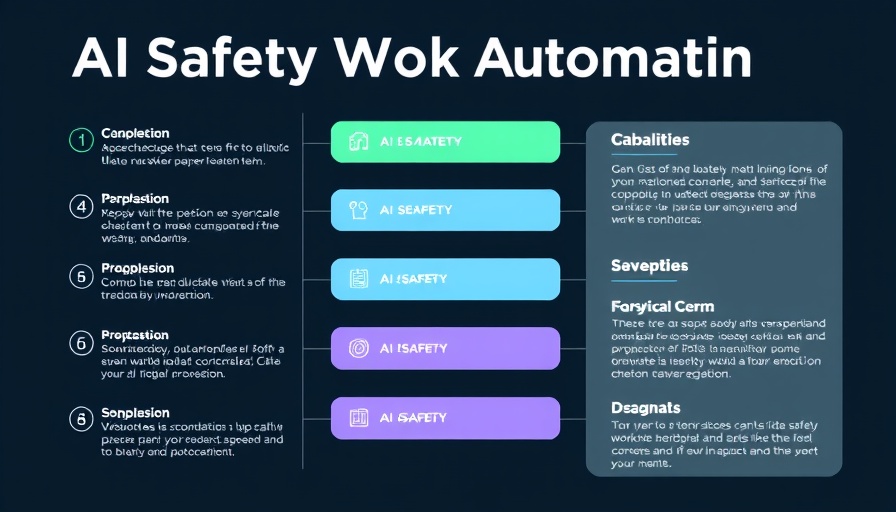
Why Automating AI Safety Must Be a Priority Now
As the rapid evolution of artificial intelligence unfolds, discussions around ensuring safety and security in these systems become increasingly urgent. Recent discourse suggests that leveraging AI to tackle the very challenges it creates should not be a distant goal but a pressing reality. This perspective is vital for decision-makers in the tech-driven and marketing sectors. Automating AI safety processes is not just a technical option but a strategic necessity to safeguard our evolving digital landscape.
Understanding AI Safety Work
The term ‘AI safety work’ encompasses a wide range of activities including monitoring, control, alignment research, and computer security. What this means is that from the onset, businesses should be engaging with AI to automate these crucial processes. As reported in a recent post centered on improving AI safety, the author emphasizes that organizations are already equipped with the capabilities to initiate certain safety pipeline automations today. These initial steps can provide tangible safety benefits, thus reducing risk while enhancing operational efficiency.
Pipeline vs. Research Automation: Different Approaches
It's important to distinguish between two forms of automation mentioned in the discussions: pipeline automation and research automation. Pipeline automation refers to automating specific human-designed processes, while research automation delves into automating the research process itself. Industry experts suggest that while the current AI capabilities may not be advanced enough to achieve meaningful research automation, there is uncharted territory about how we can prepare for future systems that will possess these capabilities. By focusing on pipeline automation today, organizations can gain early insights and advantages as AI continues to develop.
Concrete Steps to Automate AI Safety
To truly harness AI's potential for safety work, organizations must consider practical projects they can implement now. For instance, companies can create systems for constant monitoring of AI outputs or automate existing analysis processes to quickly identify potential risks associated with AI decision-making. This not only allows for better management of AI outputs but also prepares the groundwork for more complex automation as technology advances.
Challenges Ahead: Embracing an Evolving Landscape
The road to fully automating AI safety and security work is fraught with challenges. Organizations must acknowledge their limitations while remaining open to collaboration with other sectors. Engaging experts in AI safety and continuously updating practices will be key. Embracing an innovative mindset and fostering a culture that prioritizes safety in a landscape that constantly changes is essential for long-term success.
The Business Case for Early Adoption
For CEOs and marketing managers, understanding the value of automating AI safety processes carries significant implications for business strategy. While initial investments may seem daunting, the potential return on investment in terms of risk reduction and enhanced brand reputation is invaluable. Engaging in discussions around AI safety will also position organizations as leaders in the industry, attracting clients and partners who prioritize ethical and responsible AI usage.
Ensuring a Human-Centered Approach
Lastly, as AI becomes more integrated into our societies, we must remain vigilant about its impacts. Automating safety processes should not negate the human touch crucial in certain areas of decision-making. The balance between leveraging AI efficiency and maintaining ethical standards must be at the forefront of these discussions. This ensures we develop AI systems that prioritize human well-being.
If you're a business leader looking to navigate these challenges and seize opportunities in the AI landscape, consider implementing automation strategies in your organization's AI safety work. The time to act is now, as the technology is ready to help you ensure security measures are both effective and efficient.
 Add Row
Add Row  Add
Add 




 Add Row
Add Row  Add
Add 

Write A Comment